FS Colour Series: DESERT SAND Inspired by Paul Gauguin’s Fertile Earth
From dusty mountaintops to well-trodden tracks beaten dry by the sun, soft shades of pink like DESERT SAND crop up time and again in Post-Impressionist Paul Gauguin’s art. He coupled this warm, hazy shade with lush, tropical greens and blues, conveying far flung, idealised and paradisiacal escapes from the grey smoky haze of the increasingly industrialised Paris where he spent his early adult years. In his hands, this soft pink became the vibrating colour of the earth, a fertile and foundational, life-sustaining substance from where all plants and trees emerge.
Paul Gauguin was born in Paris in 1848, but his family relocated to Peru for several years, before moving to the north-central French city of Orleans. In an unlikely beginning to young adulthood for an artist, Gauguin joined the merchant marines, followed by the French Navy. In 1872 he returned to his birthplace of Paris to become a stockbroker, working his way up the ranks to become a successful businessman.
By the 1870s Gauguin was beginning to show signs of restlessness in his chosen career path. Initially, he began collecting art – he bought Impressionist paintings by Claude Monet, Pierre-Auguste Renoir and Camille Pissarro, and the paintings profoundly moved him. So much so, by the early 1880s, Gauguin had begun making his own paintings in an expressive, Impressionist style. Eventually, Gauguin rented his own studio space in Paris and befriended several burgeoning fellow painters including Camille Pissarro and Paul Cezanne.
A visit to Pont-Aven, Brittany in 1886 marked a turning point in Gauguin’s career. It was during this trip that Gauguin began painting in a Symbolist style, with flat passages of intensely vivid colour. Gauguin was moved by the deeply entrenched spirituality and rural naturalism of the small French town, which seemed so far removed from the gritty industrialism of Paris. A Farm in Brittany, 1894, pays tribute to this peaceful place he became so infatuated with, coupling the hazy, dusty rose tinges of the hillsides and roof tiles with glowing green plant life all around it.
His desire for an escape from city life became greater than ever in the following years, as Gauguin spoke of his desire to leave behind “everything that is artificial and conventional.” In 1891, Gauguin departed for French Polynesia; it was a life-changing decision from which he would never look back. The paintings Gauguin made during his mature years in Tahiti are now the most celebrated of his entire career, demonstrating his endlessly inventive explorations into the atmospheric and symbolist possibilities of colour.
In Street in Tahiti, 1891, Gauguin amplifies the colours around him to emphasise the glowing tropicality of the Polynesian scene. A dry track is salmon pink, leading us towards blooming apple and lime green plant life beyond. In the distance, stacked mountains are pale pinks and deep purples, capturing the magical, faraway wonder Gauguin experienced here. Te Fare (Le Maison), 1892, is more abstract, reducing this tranquil rural scene into a wash of iridescent green and yellow light, tempered by patches of soft rose pink in the surrounding grounds and roofs.
Tahitian Mountains, 1893 shares this same near-abstract quality, simplifying the Tahitian scenery into bare patches of ambient, glowing light. Dry grass fills the foreground with crisp, zesty lemon yellows that seem to blaze with the heat of the Polynesian sun. All around them Gauguin balances their intensity with softer hazier hues, including burnt orange, maroon, lilac, and of course, soft pink, which colours the earthy dirt track where a lonely worker carries his load back home. In the distance this same shade hits a sweet spot in the sun-streaked mountainside beyond, highlighting the raw, rugged earth from where all the grass and plants must come.





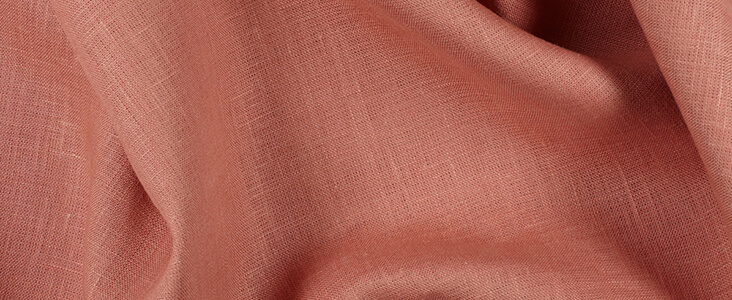

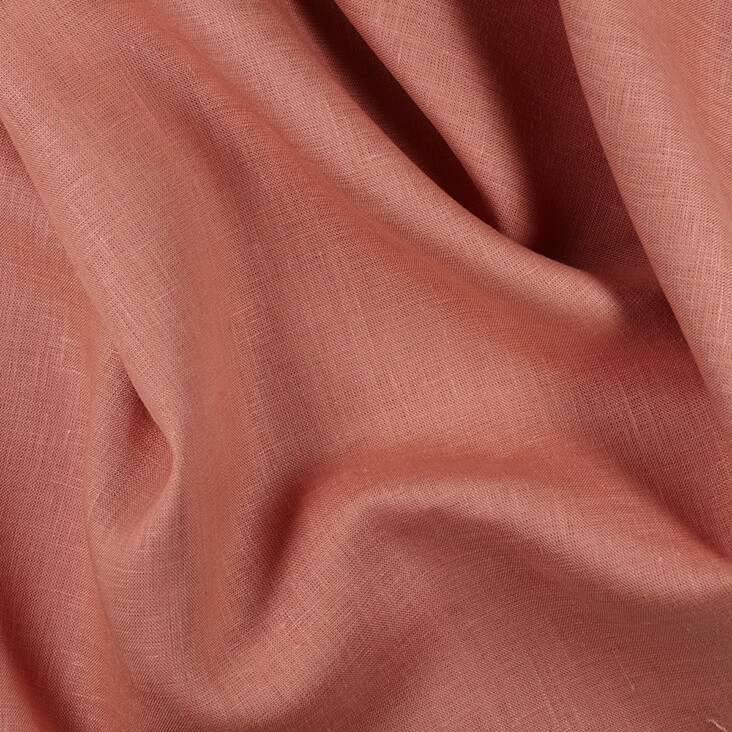
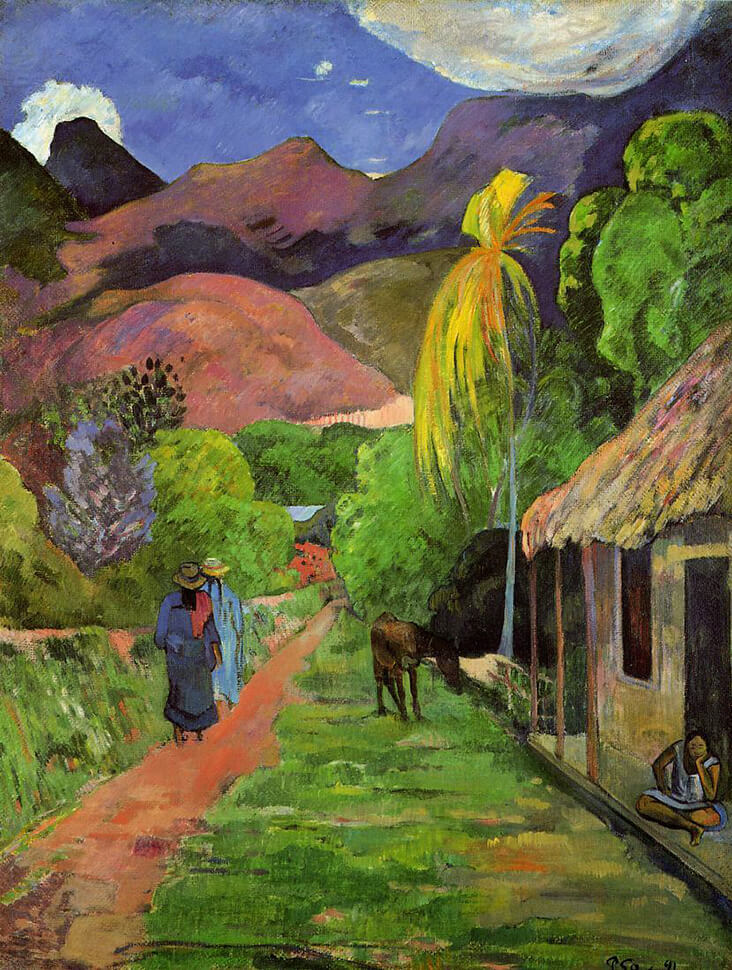
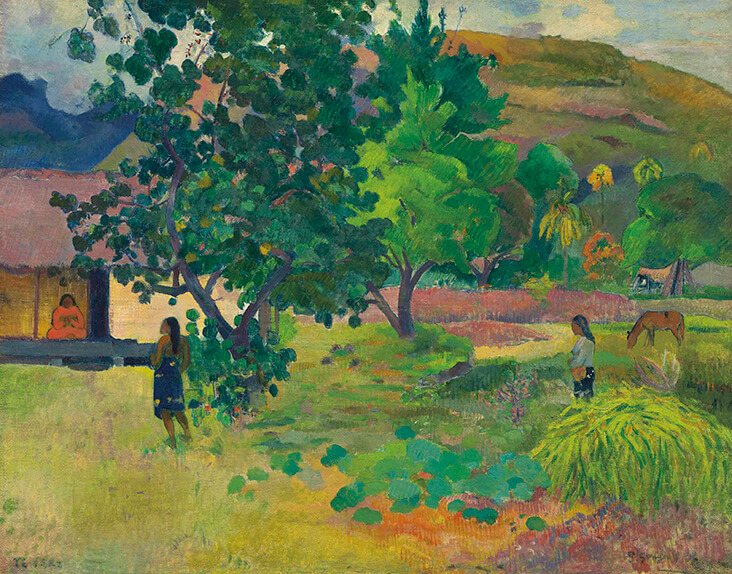
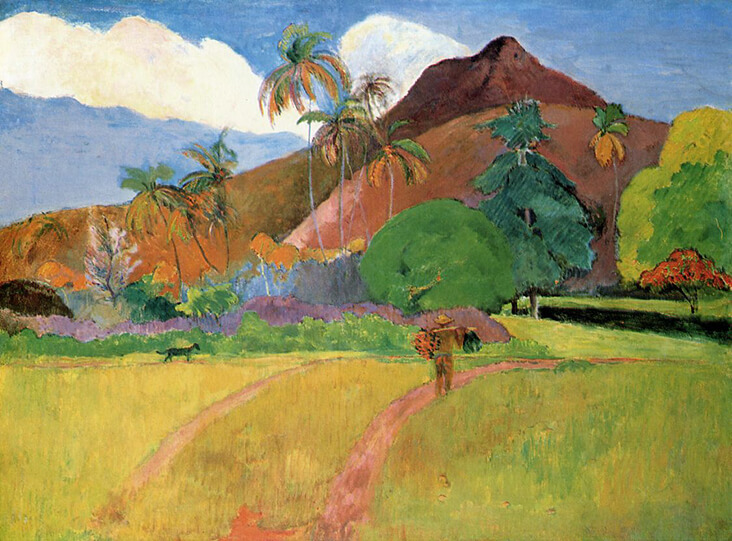








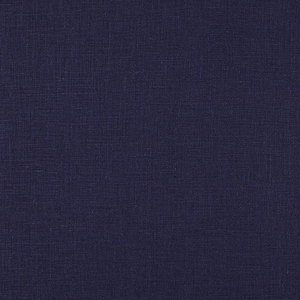





















Leave a comment